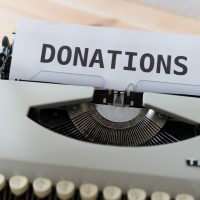Non-Governmental Organizations (NGOs) play a pivotal role in the global landscape of humanitarian aid, particularly in the context of disaster response. These organizations, often driven by a mission to alleviate suffering and promote social justice, have become indispensable partners in the efforts led by the United Nations (UN) during crises. The UN, with its vast resources and international reach, coordinates large-scale disaster response initiatives, but it is the NGOs that often bring the on-the-ground expertise and local knowledge necessary for effective intervention.
This partnership is crucial, especially in the wake of natural disasters, armed conflicts, or health emergencies, where timely and efficient responses can save lives and restore communities. The collaboration between NGOs and the UN is not merely a matter of logistics; it embodies a shared commitment to humanitarian principles. Both entities strive to uphold the dignity of affected populations, ensuring that aid is delivered impartially and without discrimination.
As the frequency and intensity of disasters increase due to climate change and geopolitical tensions, understanding the dynamics of this partnership becomes essential for improving response strategies and outcomes. This article delves into the multifaceted roles that NGOs play in disaster response, highlighting their contributions, challenges, and the collaborative frameworks that enhance their effectiveness.
The importance of NGOs in disaster response
NGOs are often the first responders in disaster situations, providing critical support when time is of the essence. Their importance lies not only in their ability to mobilize resources quickly but also in their deep-rooted connections within local communities. These organizations typically have established trust with the populations they serve, which allows them to assess needs accurately and deliver aid effectively.
This grassroots approach is vital in ensuring that assistance is culturally sensitive and tailored to the specific needs of affected individuals and families. Moreover, NGOs bring specialized skills and knowledge to disaster response efforts. Many organizations focus on particular sectors such as health, education, or shelter, allowing them to provide targeted interventions that address immediate needs while laying the groundwork for longer-term recovery.
For instance, an NGO with expertise in water and sanitation can implement life-saving measures to prevent disease outbreaks following a natural disaster. By complementing the broader strategies set forth by the UN, NGOs enhance the overall effectiveness of disaster response initiatives.
The role of NGOs in providing immediate relief and aid
In the immediate aftermath of a disaster, NGOs are often at the forefront of delivering essential services such as food, water, medical care, and shelter. Their ability to mobilize quickly is crucial; they can deploy teams within hours or days of an event, often before larger UN agencies can fully activate their operations. This rapid response is facilitated by pre-existing networks and partnerships that NGOs have cultivated over time, enabling them to leverage local resources and knowledge effectively.
For example, during the 2010 earthquake in Haiti, numerous NGOs were on the ground within days, providing emergency medical care and distributing food and water to displaced populations. Organizations like Doctors Without Borders (Médecins Sans Frontières) set up field hospitals to treat injuries and prevent disease outbreaks. Their swift action not only saved lives but also provided a sense of stability in a chaotic environment.
Such immediate relief efforts are critical in mitigating the impact of disasters and ensuring that affected communities receive the support they need to survive.
The role of NGOs in long-term recovery and reconstruction efforts
While immediate relief is vital, NGOs also play a crucial role in long-term recovery and reconstruction efforts following a disaster. Their involvement extends beyond initial aid; they are instrumental in rebuilding communities and restoring livelihoods. This phase often requires a comprehensive understanding of local contexts, which NGOs possess due to their established presence and relationships within affected areas.
For instance, after the 2004 Indian Ocean tsunami, various NGOs engaged in extensive rebuilding efforts that included constructing homes, schools, and healthcare facilities. They worked closely with local governments and communities to ensure that reconstruction efforts were sustainable and met the needs of those affected. By focusing on capacity building and empowering local populations, NGOs help foster resilience against future disasters.
This long-term commitment not only aids recovery but also contributes to community development and social cohesion.
Challenges and limitations faced by NGOs in UN-led disaster response
Despite their critical role, NGOs face numerous challenges when operating within UN-led disaster response frameworks. One significant limitation is funding; many NGOs rely on donations and grants that can be unpredictable or insufficient during large-scale emergencies. This financial uncertainty can hinder their ability to respond effectively or sustain long-term projects.
Additionally, competition for funding among various organizations can lead to fragmentation of efforts rather than a coordinated response. Another challenge is navigating bureaucratic processes associated with UN-led initiatives. While collaboration with UN agencies can enhance resource mobilization, it can also introduce complexities that slow down decision-making and implementation.
NGOs may find themselves constrained by rigid guidelines or reporting requirements that do not align with their operational realities. Furthermore, security concerns in conflict-affected areas can limit access for NGOs, complicating their ability to deliver aid where it is most needed.
Collaboration between NGOs and the UN in disaster response efforts
Effective collaboration between NGOs and the UN is essential for maximizing the impact of disaster response efforts. This partnership can take various forms, from joint assessments of needs to coordinated distribution of aid. By working together, both entities can leverage their strengths—NGOs’ local knowledge and agility combined with the UN’s resources and global reach—to create a more comprehensive response strategy.
One successful model of collaboration is the Inter-Agency Standing Committee (IASC), which brings together various humanitarian actors, including UN agencies and NGOs, to coordinate responses during crises. This platform facilitates information sharing, joint planning, and resource allocation, ensuring that all parties are aligned in their efforts. Such collaborative frameworks not only enhance efficiency but also foster a sense of shared responsibility among stakeholders involved in disaster response.
Examples of successful NGO involvement in UN-led disaster response efforts
Numerous examples illustrate the successful involvement of NGOs in UN-led disaster response efforts. One notable case is the response to the Ebola outbreak in West Africa from 2014 to 2016. During this crisis, NGOs like Partners In Health played a crucial role in providing medical care, conducting outreach programs, and educating communities about prevention measures.
Their collaboration with UN agencies such as the World Health Organization (WHO) was instrumental in controlling the outbreak and ultimately eradicating the virus from affected regions. Another example is the response to Typhoon Haiyan in the Philippines in 2013. In this instance, various NGOs worked alongside UN agencies to provide immediate relief while also engaging in long-term recovery efforts.
Organizations like Oxfam focused on restoring livelihoods by providing cash assistance and supporting local businesses. Their involvement not only addressed immediate needs but also contributed to rebuilding resilient communities capable of withstanding future disasters.
Recommendations for improving the effectiveness of NGOs in UN-led disaster response efforts
To enhance the effectiveness of NGOs within UN-led disaster response frameworks, several recommendations can be considered. First, fostering stronger partnerships between NGOs and UN agencies is essential for creating a more cohesive response strategy. This can be achieved through regular communication channels, joint training sessions, and collaborative planning exercises that align objectives and resources.
Second, increasing funding opportunities for NGOs is crucial for ensuring they can respond effectively during crises. Donors should prioritize flexible funding mechanisms that allow organizations to adapt their strategies based on evolving needs on the ground. Additionally, establishing multi-year funding commitments can help NGOs plan long-term recovery initiatives without the constant pressure of securing new funds.
Finally, advocating for simplified bureaucratic processes within UN-led initiatives can significantly improve operational efficiency for NGOs. Streamlining reporting requirements and decision-making protocols will enable organizations to respond more swiftly to emergencies while maintaining accountability. In conclusion, NGOs are vital players in disaster response efforts led by the UN.
Their unique strengths—local knowledge, rapid mobilization capabilities, and specialized expertise—complement the broader strategies employed by international agencies. By addressing challenges through improved collaboration, funding mechanisms, and streamlined processes, we can enhance the effectiveness of these organizations in delivering timely aid and fostering long-term recovery for communities affected by disasters.









































